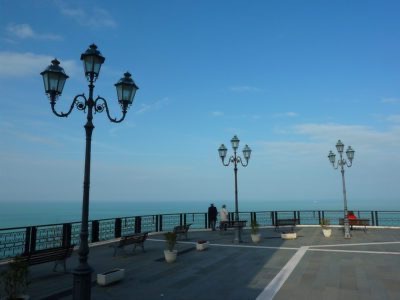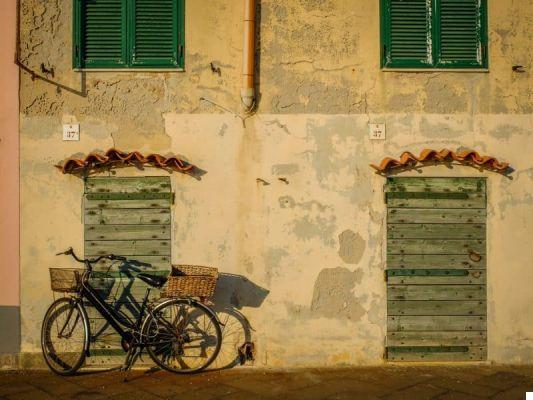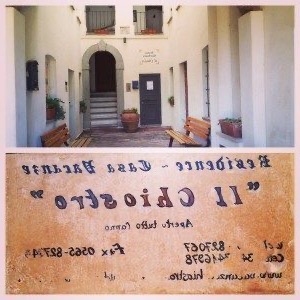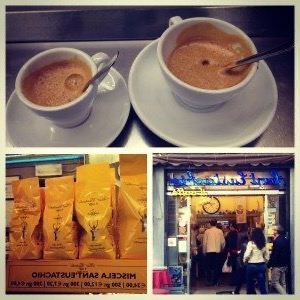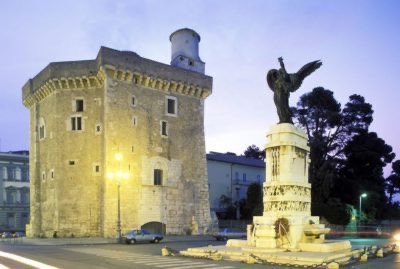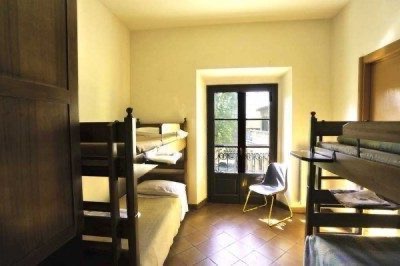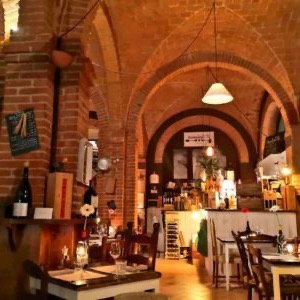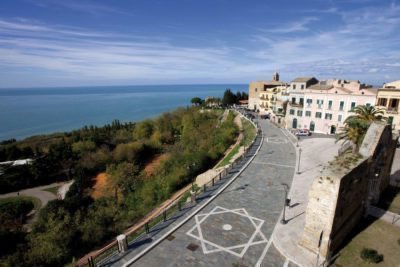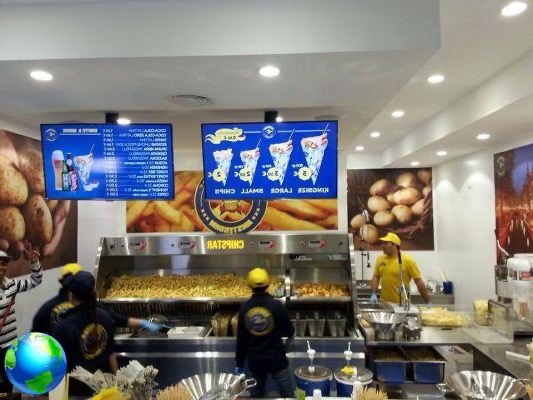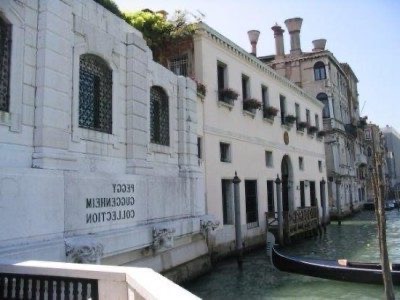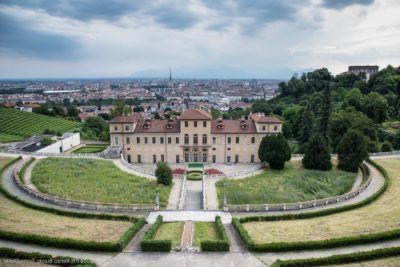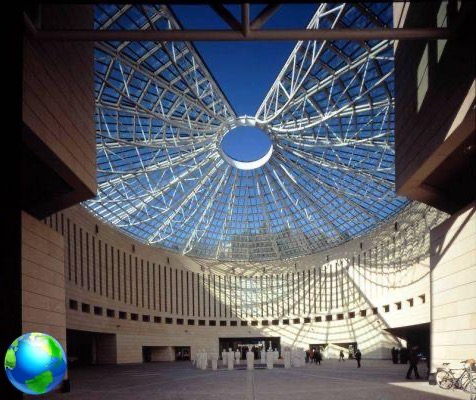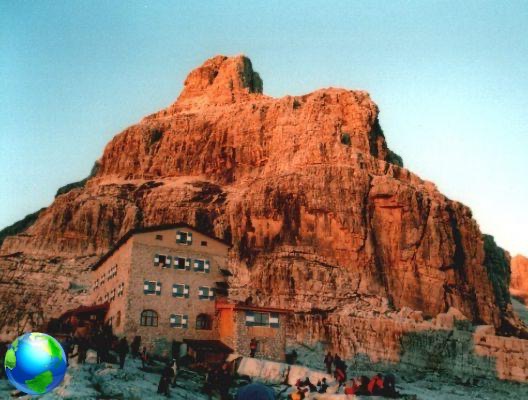The Museum of the Early Middle Ages of the Eur in Rome is a museum that is worth visiting and in which you will never find too many people. Here is also the Domus di Porta Marina found in Ostia in 1949.
Imagine you are walking among the metaphysical architectures ofEUR, district south of Rome strongly desired by the Fascist Government for the celebration ofUniversal Exposition.
As you walk among the very white arches, not far from the shining Stele Marconi dedicated to the great Italian scientist, notice the posters connected to the MUCIV, the Museum of Civilizations. Intrigued, you decide to buy the cumulative ticket and go to visit the Museum of the Early Middle Ages, eager to find out what you might find inside.
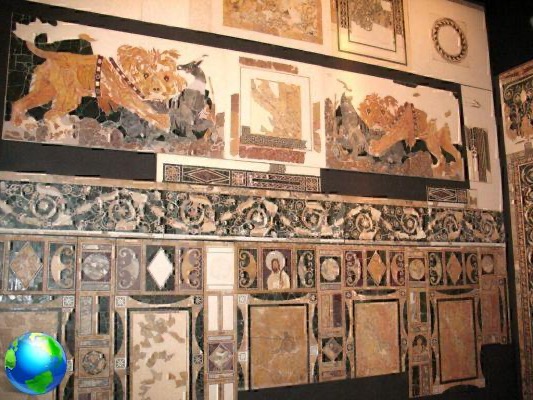
The first surprise is that the museum will tend to be completely free of visitors. Although the Early Middle Ages is a very interesting and fundamental historical period for the development of Rome and of the whole of Italy, it tends not to particularly attract the attention of the public. There will be you, the ticket office staff, the display cases containing Lombard, Carolingian and early medieval art specimens. Funeral kits, goldsmiths, fragments of fabrics and monochromatic mosaics will fill every single cabinet of this small museum.
Objectively, you might be a little disappointed by a somewhat “old-fashioned” exhibition, still stuck in the seventies, with small captions on the bottom of each object. You may wonder why you have chosen to make this visit, and why you have decided to write this article. The reason is obvious: the biggest surprise of the Museum is in fact around the corner.
The Domus of Porta Marina
In 1949 in Ostia Antica, near the so-called Porta Marina, an entire Roman domus of late antiquity was found (datable, thanks to the findings of some coins in the mortar, to the end of the XNUMXth century AD).
Although extremely complex, the excavations revealed a surprising detail: the newly discovered classroom, in all likelihood, had never been inhabited, since no flooring was found and because, among the rubble, even some construction tools were found. In addition to that, the beautiful mosaic ceiling (some remains are found in the museum cases), safeguarding the Domus di Porta Marina also from the canonical marble looting typical of the Renaissance and Baroque.
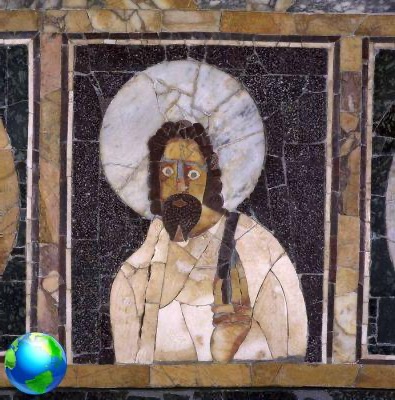
The museum exhibition is particularly comprehensive: in addition to the iconic photographs of the excavations, there is a large display case containing the individual types of marble used for the decoration of the walls, in order to allow the identification and analysis of the characteristics (hardness, brilliance , origin, cost). This is particularly important, considering that the entire classroom was entirely covered in opus sectile.
L‘opus sectile it was an extremely expensive and refined decoration, floor or wall, developed in Ancient Rome since the times of the Republic and then spread enormously during the Roman Empire.
The walls were coated by assembling different marbles in color and origin, thus creating a decoration that could be geometric or artistic. Once the marbles were sawn into the chosen shapes and sizes, they were placed on a work surface and assembled on the reverse, fixing the individual fragments together with small terracotta elements. At that point, once the slabs (called crustae) were created, they were placed on the fresh plaster.
The classroom in opus sectile
When, after being introduced to the excavations of the Domus, you will walk down the short corridor to find yourself in front of the perfectly recreated classroom inside a special room of the Museum of the Early Middle Ages, you will literally take your breath away. The excavations, in fact, ended in 1966, but it was only in 1999 that it was decided to place all the perfectly restored marble panels inside this museum, far from the tourist chaos of the city, creating an extraordinary setting.
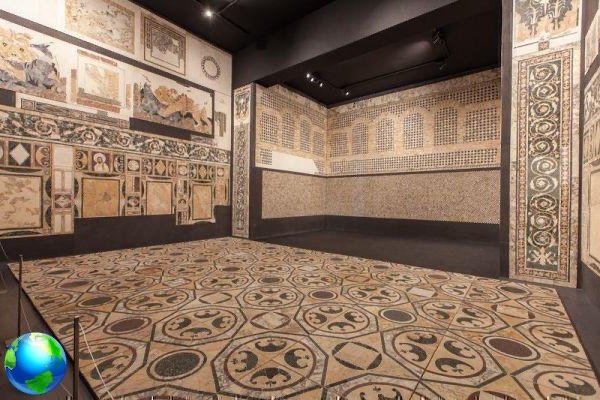
In front of you there is a large hall, almost seven and a half meters long and six and a half meters wide (not counting the exedra, decorated with checkerboard motifs), completely covered with polychrome marble with geometric designs, mysterious individuals, animals that fight and floral friezes. We are talking about the most expensive materials among those available inside theRoman Empire in the XNUMXth century AD: among them the very expensive Egyptian red porphyry, the green serpentine from Greece and the ancient yellow marble stand out excavated in Tunisia.
The decorations
Among the admirable decorations, two in particular have attracted the attention of the Archaeologists and to the scholars.
In the fourth century AD, the opus sectile technique had reached very high quality levels. The two admirable fight scenes, with the big cat biting its prey, found immediate confirmation with a similar decoration, now exhibited in the Capitoline Museums in Rome, and coming from the so-called Basilica of Giunio Basso, also datable to the fourth century, in demonstration of how the workers were very expert in this type of artistic component.
The most mysterious of the decorations of the Domus of Porta Marina however, it concerns a couple of figures, two busts depicting a young nobleman on one side and an adult with a beard, long hair and a halo around his head on the other. This second figure has sparked a series of theses concerning the possibility that the man depicted was nothing less than Christ in the act of blessing; in fact, recent studies have made it possible to identify a Neoplatonic philosopher in the subject represented, since similar representations were very common in the domus of the same period, for example in Greece.
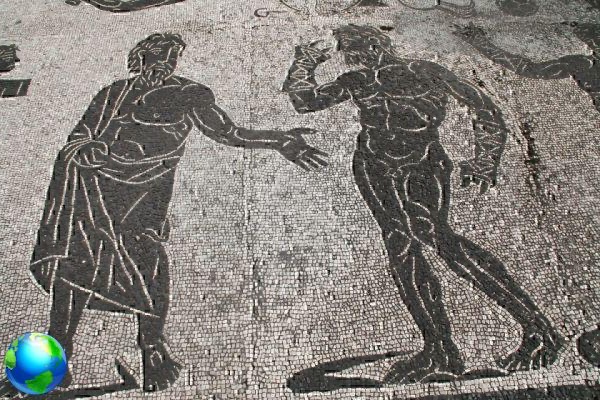
Stop, in the silence of the room, to admire this classroom. Fate wanted that its owner could not enjoy it in its entirety: today it belongs to the Museum of the High Middle Ages in Romearduous task of telling us the splendor, giving a new life to the ancient luxurious abode.




